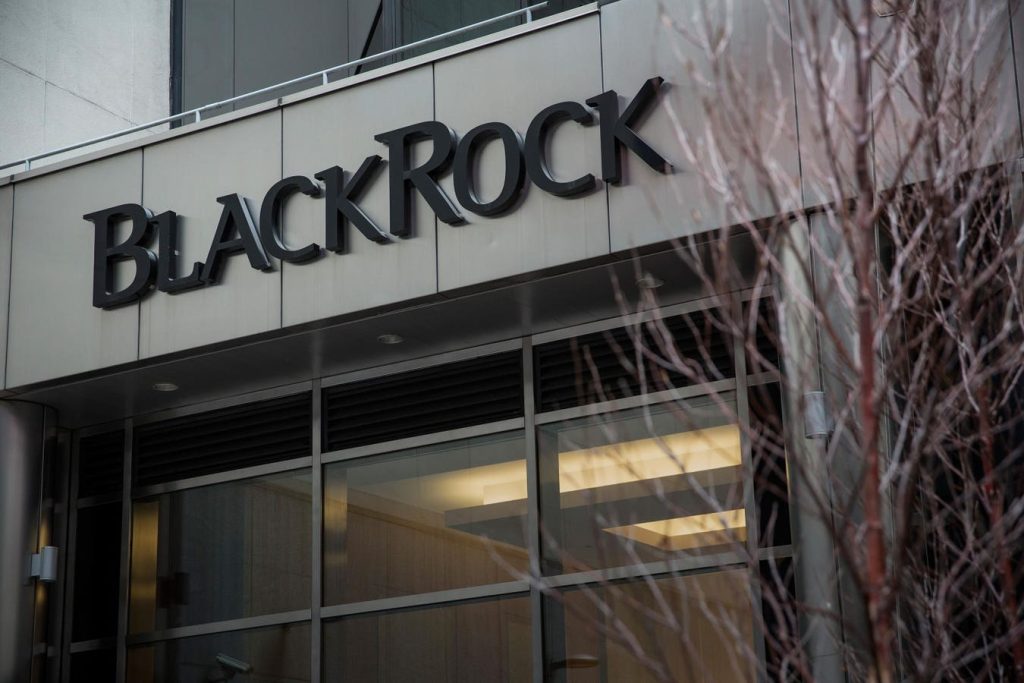Paragraph 1: BlackRock’s Embrace of Bitcoin
BlackRock, the world’s largest asset manager, has signaled a significant shift in its stance on Bitcoin. In a recent research report, the firm suggests that Bitcoin, once shunned by mainstream investors, should now be considered a part of traditional investment portfolios. Specifically, BlackRock recommends an allocation of 1% to 2% in a standard "60/40" portfolio (60% stocks, 40% bonds). This endorsement marks a major turning point for the cryptocurrency, potentially opening the floodgates for substantial institutional investment. The report, titled "Sizing Bitcoin In Portfolios," argues that Bitcoin offers diversification benefits and compares its risk profile to that of individual mega-cap tech stocks. This comparison suggests Bitcoin’s potential to become a significant holding in diversified portfolios, similar to established tech giants.
Paragraph 2: Potential Impact on Bitcoin Demand
The implications of BlackRock’s recommendation are substantial. With over $11.5 trillion in assets under management, even a small percentage allocation to Bitcoin could translate into billions of dollars of new demand. Considering that more than $5.2 trillion of BlackRock’s assets are equities, a 1% allocation would represent approximately $50 billion flowing into the Bitcoin market. This influx of capital could significantly impact Bitcoin’s price, which has already experienced substantial gains in recent years, outperforming the S&P 500 by a wide margin. The sheer size of BlackRock’s influence in the financial world makes this recommendation a potential catalyst for further Bitcoin adoption by other institutional investors.
Paragraph 3: Bitcoin’s Risk Profile and Comparison to Mega-Cap Stocks
BlackRock’s analysis positions Bitcoin alongside the "Magnificent Seven" tech stocks – companies like Apple, Microsoft, and Amazon – in terms of portfolio risk. While acknowledging the inherent differences between Bitcoin and these established corporations, the report highlights their shared characteristic of representing a significant portion of portfolio risk due to their large market capitalizations. Bitcoin’s market capitalization, currently around $2 trillion, is comparable to the average market capitalization of the Magnificent Seven, which stands at around $2.5 trillion. This comparison serves as a framework for understanding the potential impact of holding Bitcoin in a diversified portfolio and suggests that a small allocation can be managed similarly to managing the risk associated with holding individual mega-cap stocks.
Paragraph 4: Bitcoin’s Diversification Potential and Evolving Correlation
A key argument for including Bitcoin in a portfolio is its historically low correlation with traditional asset classes. BlackRock acknowledges that while Bitcoin showed a strong correlation with tech stocks during the COVID-19 market fluctuations, a divergence emerged in June 2023. The report anticipates this divergence to persist, driven by factors such as geopolitical tensions, declining trust in traditional financial institutions, and growing government deficits. These factors, according to BlackRock, are specific to Bitcoin and differentiate it from other asset classes, strengthening its potential as a diversifier. This perspective suggests that Bitcoin can offer a hedge against traditional market risks and enhance portfolio resilience, particularly in times of economic uncertainty.
Paragraph 5: Managing Bitcoin’s Volatility and Determining the Optimal Allocation
Despite its potential benefits, BlackRock acknowledges Bitcoin’s notorious volatility, which has historically resulted in significant price swings. The report emphasizes the importance of carefully managing this volatility through appropriate position sizing. While a 1-2% allocation is deemed acceptable, mirroring the risk contribution of a single Magnificent Seven stock, higher weightings are considered imprudent. The analysis demonstrates that even small increases in allocation can exponentially increase the overall portfolio risk. A 1% allocation contributes 2% to overall portfolio risk, a 2% allocation contributes 5%, but a 4% allocation increases the risk contribution to a disproportionately high 14%. This underscores the need for a cautious approach and reinforces BlackRock’s recommendation for a relatively small allocation.
Paragraph 6: BlackRock’s Existing Bitcoin Investments and Future Outlook
BlackRock’s growing involvement in the Bitcoin ecosystem extends beyond this research report. The firm has already partnered with Coinbase to facilitate Bitcoin purchases for institutional clients and operates the world’s largest Bitcoin ETF, the iShares Bitcoin Trust (IBIT). While currently advocating for a modest allocation, BlackRock hints that Bitcoin’s role in portfolios might evolve over time, potentially becoming more tactical and akin to gold as a hedging instrument. This suggests that as the cryptocurrency market matures and Bitcoin gains wider acceptance, its investment characteristics may shift, influencing its strategic use within portfolios. The increasing investor demand and rising Bitcoin prices fueled by institutional interest are already proving beneficial for BlackRock’s own Bitcoin-related ventures.










